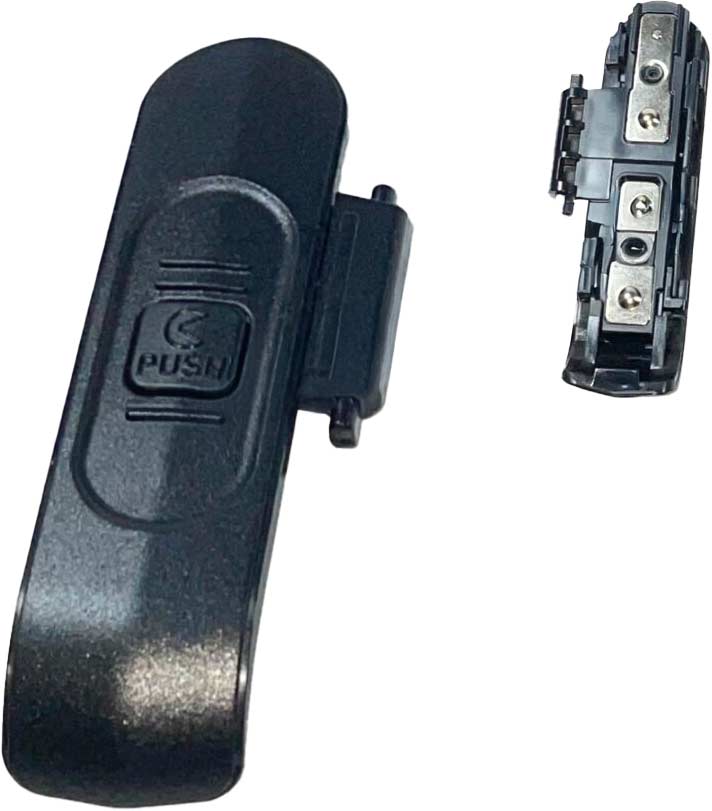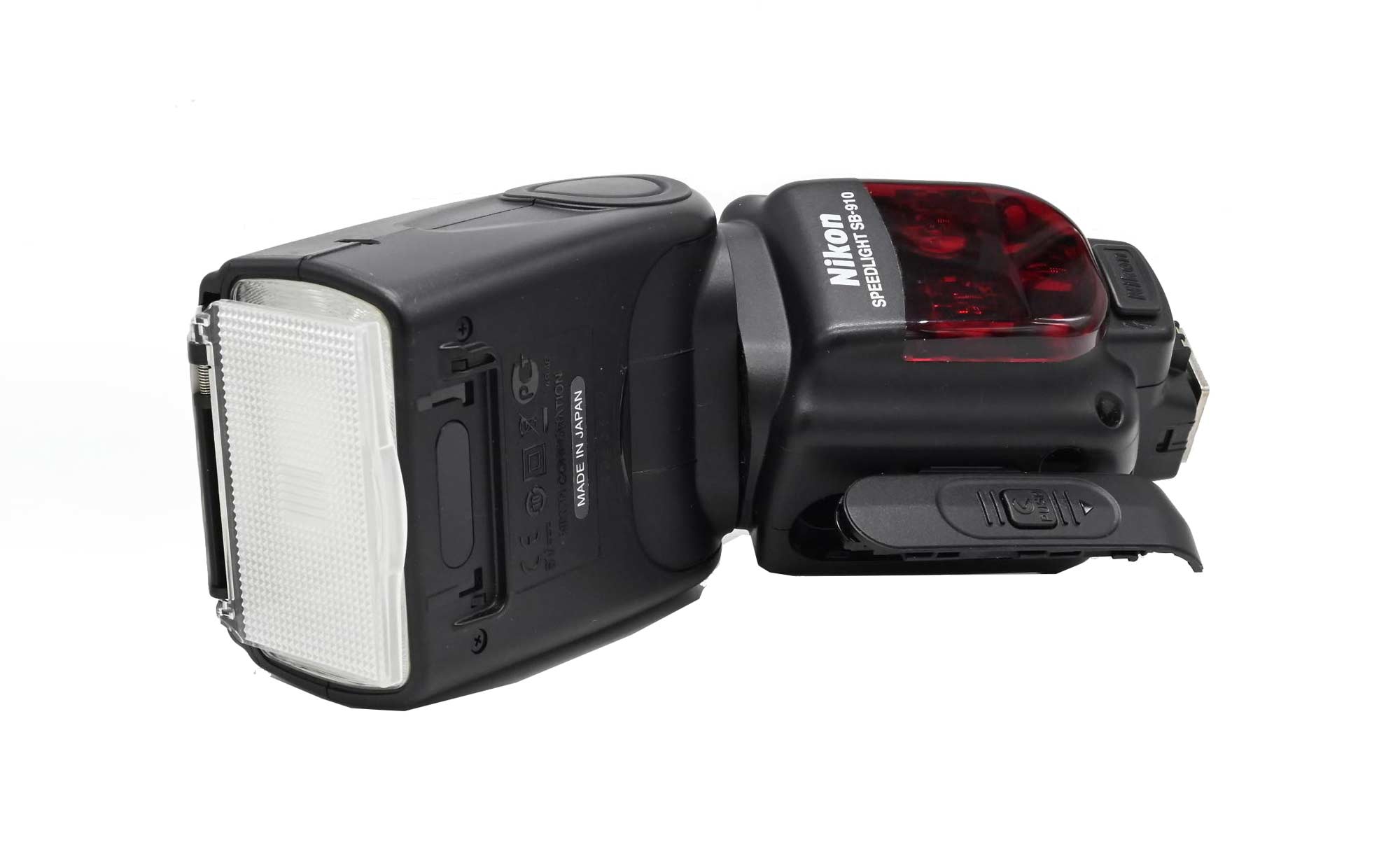Replacing the Nikon SB-910 Battery Compartment Door
A Complete Repair Guide
The Nikon SB-910’s battery compartment door is one of those components that seems indestructible until it suddenly isn’t. When the sliding door mechanism fails—whether through wear, impact damage, or the dreaded battery leak corrosion—many photographers assume their flash unit is destined for expensive professional repair. However, with the right tools and careful technique, this is actually a manageable DIY fix that can save you considerable time and money.
Why Battery Doors Fail on the SB-910
The SB-910’s battery compartment utilises a sliding door mechanism that relies on precise tolerances and small plastic components. Common failure modes include broken sliding tracks, damaged locking tabs, or complete door separation from the main body. Battery leakage is particularly problematic, as alkaline battery corrosion can literally weld components together.
Unlike simpler camera battery doors that simply pivot open, the SB-910’s design requires the door to slide along integrated rails within the flash housing—making replacement more complex than a simple clip-on part.
Tools Required
The precision required for this repair necessitates proper tools. The specific toolkit that proved successful in this repair was a precision screwdriver set with magnetic bits like this one. Key components needed:
- Phillips head bits: Various sizes (typically PH000, PH00, PH0)
- Flathead bits: For prying operations
- Tweezers: For handling small components
- Magnetic bit holder: Prevents dropped screws
- Spudger or plastic prying tools: To avoid cosmetic damage
Generic “mobile phone repair” kits often lack the precision required for camera electronics. Professional-grade toolkits like those from iFixit or similar manufacturers provide the build quality needed for delicate electronic repairs.
Sourcing Replacement Parts
Genuine Nikon Parts:
Replacement battery doors are available through various channels. Genuine Nikon parts can occasionally be found on eBay, typically priced around £15-20. These carry the part number SS001-77F for the complete door assembly.
Third-Party Options:
AliExpress and similar platforms offer compatible replacement doors at significantly lower prices (£5-10), though quality can vary. These often ship from overseas with 2-5 day delivery times.
Availability Challenges:
The SB-910 is no longer in production, making genuine parts increasingly scarce. Nikon discontinued official repair support for the SB-800 series, and the SB-910 may follow suit. This makes DIY repair skills increasingly valuable for maintaining these professional flash units.

The Disassembly Process
Step 1: Safety Precautions
Critical Safety Warning: Flash units contain high-voltage capacitors that can deliver dangerous shocks even when powered off. Always ensure the unit has been powered down for at least 30 minutes before beginning work. Professional repair services recommend capacitor discharge procedures for safety.
Step 2: Accessing the Hot Shoe Assembly
The key insight from this successful repair was that the battery compartment door is accessed through the hot shoe mounting area, not through the main body panels. This approach avoids the complexity of main body disassembly whilst providing direct access to the door mechanism.
- Remove all batteries and ensure the flash has been powered off
- Identify the hot shoe mounting screws – typically four small Phillips head screws securing the metal mounting plate
- Use appropriate precision bits to avoid stripping the small screws
- Work systematically – place screws in a magnetic tray to prevent loss
Step 3: Hot Shoe Removal
Following established repair procedures, the hot shoe assembly can be detached once the mounting screws are removed. This exposes the internal mechanism including the battery compartment door assembly.
Critical Note: Ribbon cables or wire harnesses may connect the hot shoe to the main PCB. These connections are fragile and must be handled with extreme care.
Step 4: Door Replacement
With the hot shoe assembly removed, the battery compartment door becomes accessible. The door mechanism typically involves:
- Sliding rail system integrated into the housing
- Spring-loaded locking mechanism
- Contact points for the door position sensors
Replacement involves carefully removing the damaged door and sliding the new component into the rail system until the locking mechanism engages.

Testing and Reassembly
Functional Testing
Before reassembly, test the door mechanism:
- Slide operation – Ensure smooth opening/closing motion
- Locking engagement – Verify the door locks securely in both positions
- Contact alignment – Check that battery contacts align properly
Reassembly Process
Reassembly follows the reverse procedure:
- Reconnect any ribbon cables with extreme care
- Position the hot shoe assembly ensuring proper alignment
- Replace mounting screws with appropriate torque (hand-tight only)
- Test final operation with batteries installed
Cost Analysis
DIY Repair Costs:
- Precision toolkit: £10-25 (one-time investment)
- Replacement door: £5-20 depending on source
- Total: £20-45
Professional Repair Costs:
Third-party repair services quote £60-120 for flash repairs, whilst Nikon’s discontinued support means limited official options.
Replacement Cost Context:
A used SB-910 in good condition commands £180-250 on the secondhand market, making repair economically sensible for most photographers.
When to Attempt DIY vs Professional Repair
Suitable for DIY:
- Mechanical door damage (broken slides, damaged tabs)
- Simple component replacement
- Users comfortable with precision electronic work
Requires Professional Service:
- Electrical faults or circuit damage
- Flash tube replacement
- Capacitor-related issues
- Complex internal component damage
The battery door replacement falls squarely into the DIY-suitable category, requiring only mechanical disassembly without electrical circuit work.
Prevention and Maintenance
Battery Management:
The primary cause of door mechanism failure is battery leakage damage. Using quality batteries (preferably NiMH rechargeables) and removing batteries during extended storage periods significantly extends component life.
Handling Practices:
Avoid forcing the door mechanism. If resistance is encountered, investigate the cause rather than applying additional force, which can damage the plastic rail system.
Conclusion
The SB-910 battery door replacement represents a manageable repair for photographers willing to invest in proper tools and approach the work methodically. The key insight—accessing the mechanism through the hot shoe assembly rather than attempting main body disassembly—significantly simplifies the procedure.
With genuine replacement parts becoming increasingly scarce, developing these repair skills helps maintain valuable professional equipment that might otherwise require expensive professional service or complete replacement. The combination of precision tools, careful technique, and patience makes this repair accessible to serious photography enthusiasts.
For photographers heavily reliant on flash photography, mastering these basic repair procedures represents both a practical skill and significant cost savings over the equipment’s working lifetime.

